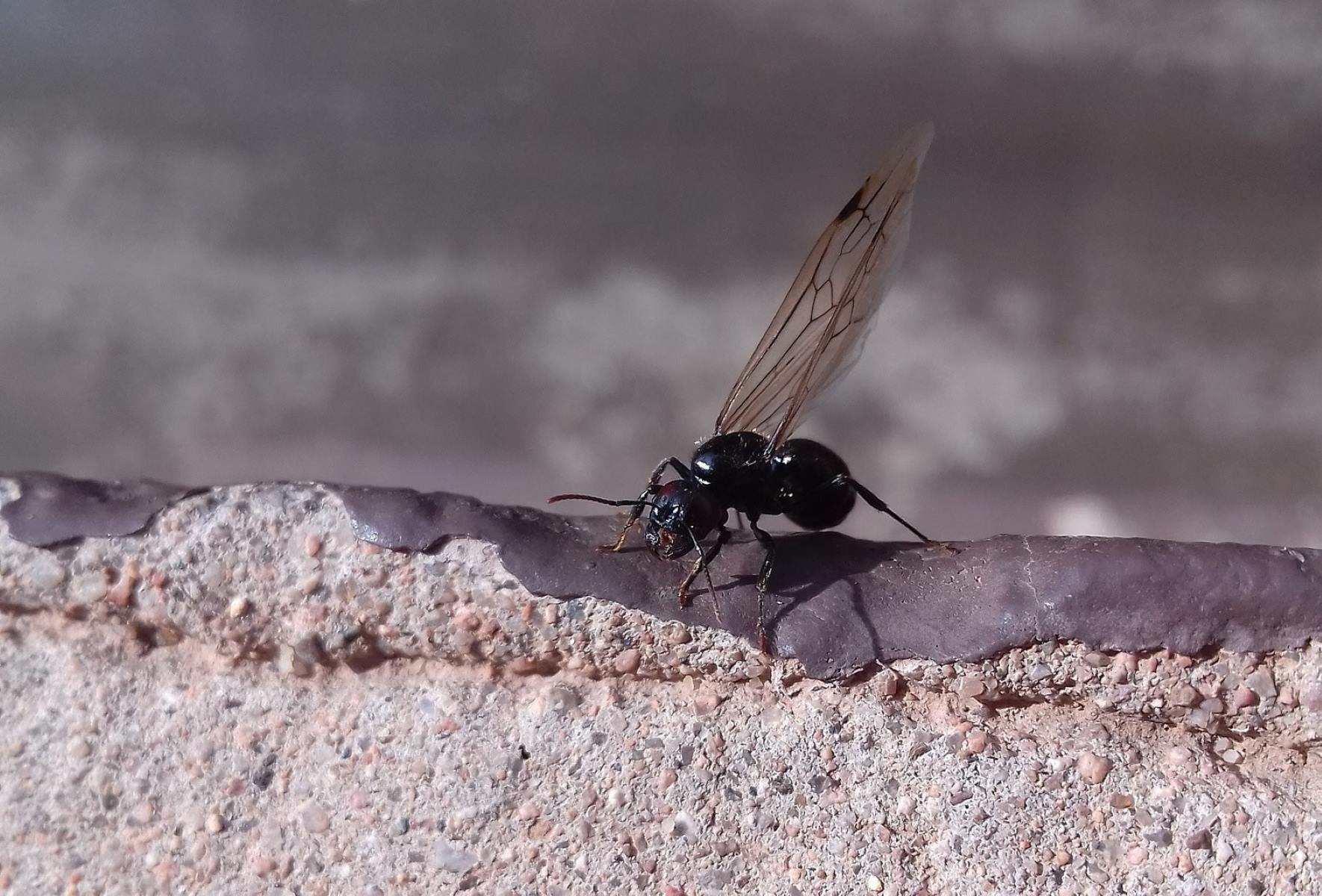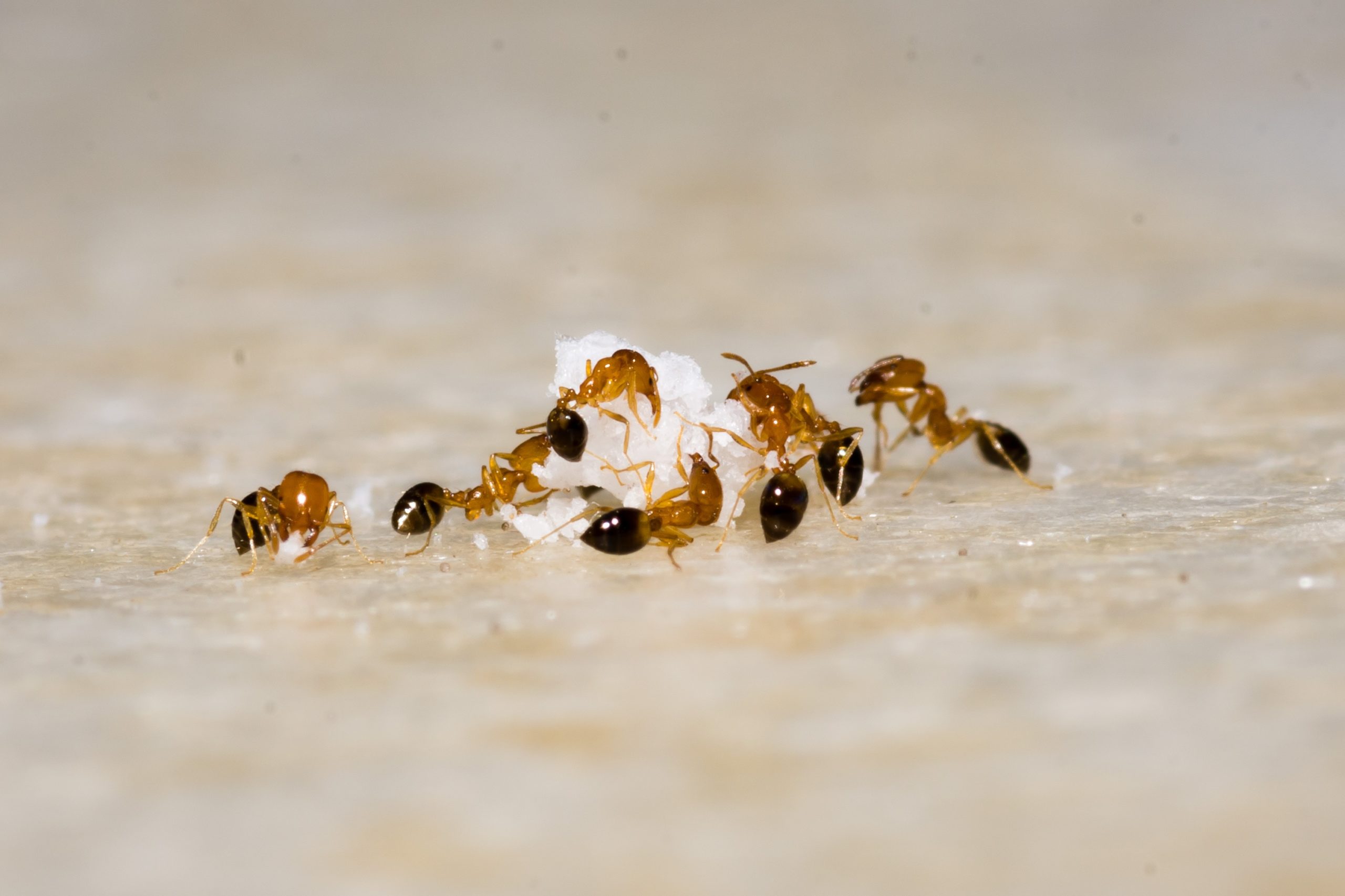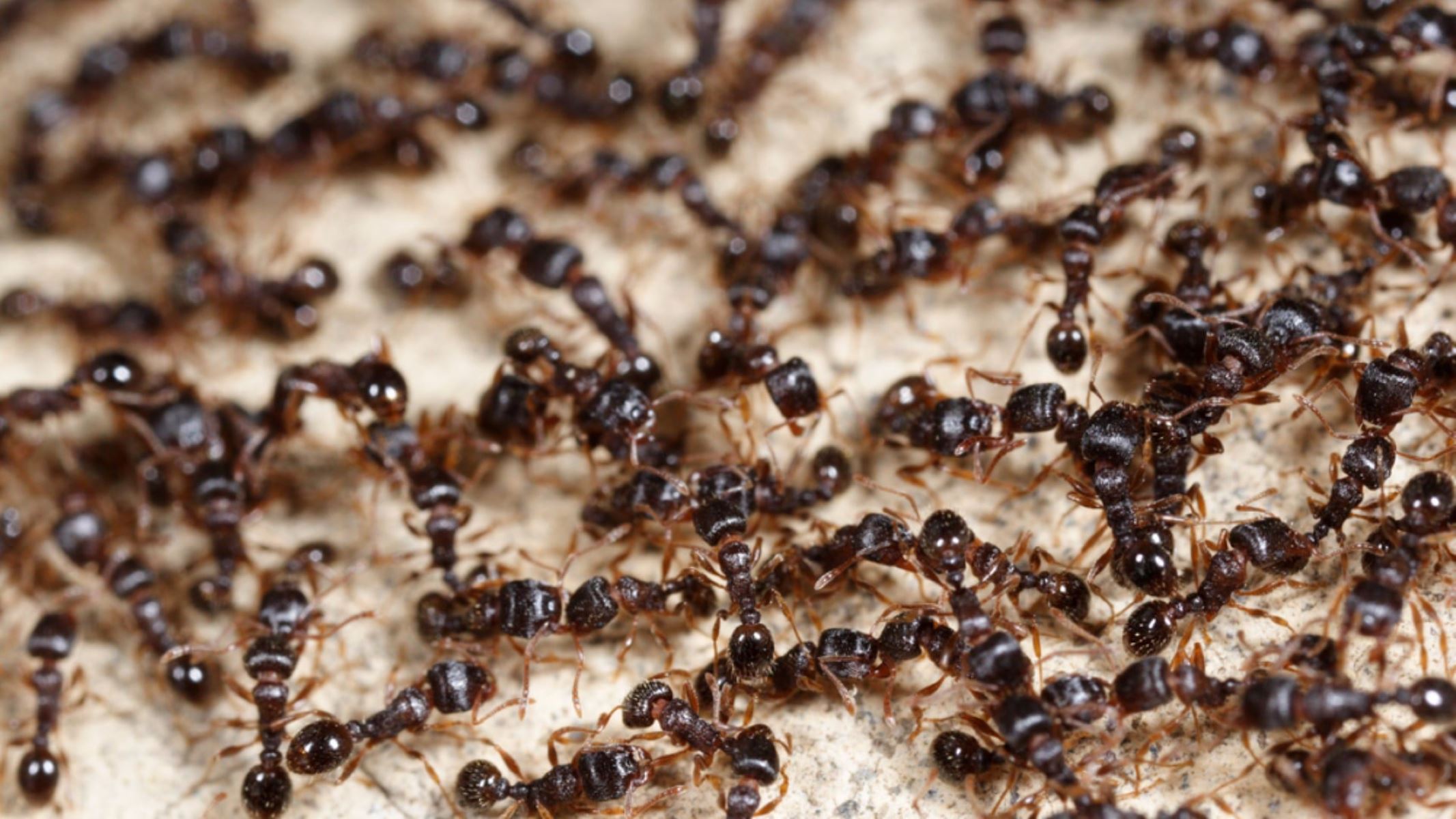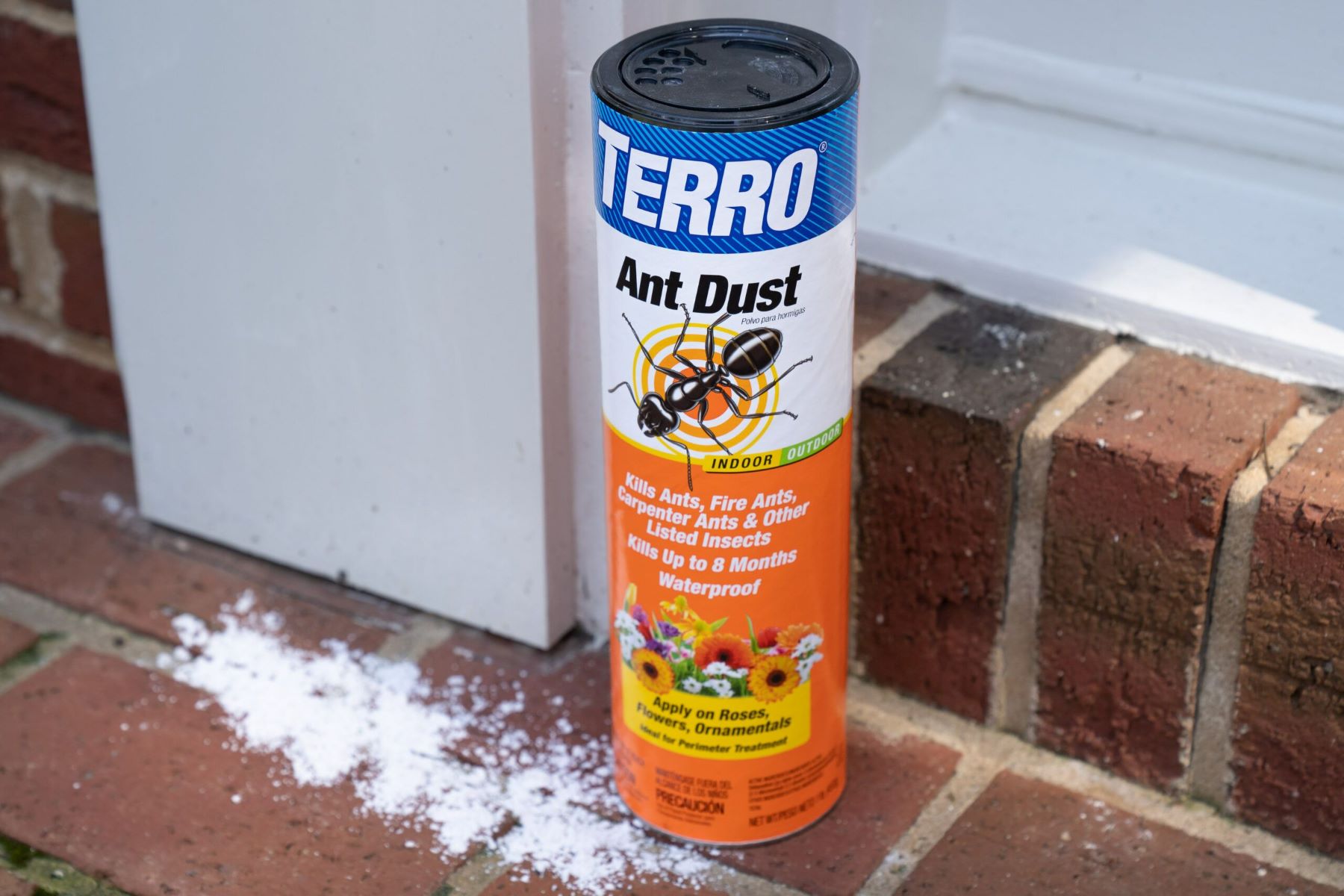

Lifestyle
Unbelievable! Winged Ants Invade My House!
Published: February 15, 2024
Discover how to deal with a winged ant invasion in your home and protect your lifestyle from these unwanted pests. Learn effective strategies now!
(Many of the links in this article redirect to a specific reviewed product. Your purchase of these products through affiliate links helps to generate commission for Regretless.com, at no extra cost. Learn more)
Table of Contents
Introduction
Have you ever experienced the sudden and unsettling appearance of winged ants in your home? If so, you're not alone. The invasion of winged ants can be an unexpected and alarming occurrence for many homeowners. These tiny creatures, often mistaken for termites, can swiftly disrupt the tranquility of your living space. However, understanding the nature of these winged invaders is the first step toward effectively managing and preventing their presence.
In this comprehensive guide, we will delve into the world of winged ants, exploring their distinct characteristics, the reasons behind their invasions, and practical strategies for preventing and eliminating them from your home. By gaining insight into the behavior and habits of winged ants, you can equip yourself with the knowledge needed to address and mitigate their incursions.
So, if you've ever found yourself bewildered by the sudden appearance of these winged insects, fret not. This guide will provide you with valuable information and actionable tips to help you regain control of your living space and bid farewell to these uninvited guests. Let's embark on this enlightening journey to uncover the secrets of winged ants and reclaim the peace and comfort of your home.
Identifying Winged Ants
Winged ants, also known as alates, are a distinct category of ants characterized by their elongated bodies and prominent wings. These flying insects are often mistaken for termites due to their similar appearance, but there are key differentiating features that can help you accurately identify them.
Physical Characteristics
Winged ants typically measure around 1/4 to 3/8 inch in length, with a clearly defined narrow waist and bent antennae. Their wings are unequal in length, with the front pair being larger than the hind pair. Unlike termites, winged ants exhibit a noticeable variation in wing size and shape, with the front wings being more prominent and elongated compared to the hind wings. Additionally, their bodies are segmented into three distinct parts: the head, thorax, and abdomen, further setting them apart from termites.
Behavior
One of the most evident signs of winged ants is their swarming behavior, particularly during the mating season. These swarms, often seen near windows and doors, indicate the presence of a nearby colony. Unlike termites, winged ants are not known to consume wood, and their presence indoors is usually indicative of a satellite colony established within the structure of the building.
Coloration
Winged ants can exhibit varying colors, ranging from black and brown to reddish hues. Their coloration may differ based on the species and can provide valuable clues for accurate identification.
Read more: Unbelievable! Sink Infested With Ants!
Antennae
The distinct bent or elbowed antennae of winged ants are a crucial feature that distinguishes them from termites. While termites have straight antennae, winged ants possess antennae that are visibly curved or angled.
By familiarizing yourself with these distinguishing characteristics, you can confidently differentiate winged ants from termites, enabling you to take appropriate measures to address their presence in your home. Understanding these key identifiers is essential for effective pest management and ensuring the well-being of your living environment.
Reasons for Winged Ant Invasions
Winged ant invasions can be attributed to several key factors, shedding light on the underlying reasons for their sudden appearance in homes and other structures. Understanding these reasons is vital for devising effective strategies to prevent and address such invasions. Here are the primary reasons for winged ant invasions:
Mating and Colony Expansion
One of the primary reasons for winged ant invasions is the mating and colony expansion phase. Winged ants, also known as alates, are reproductive members of ant colonies. During specific periods, typically in spring or summer, these alates emerge from established colonies to engage in nuptial flights. These flights are crucial for the mating process, allowing the winged ants to disperse and establish new colonies. As a result, the sudden appearance of winged ants indoors often signifies the proximity of a mature ant colony and the commencement of their reproductive cycle.
Environmental Triggers
Environmental factors play a significant role in triggering winged ant invasions. Changes in weather patterns, particularly warm and humid conditions, can prompt the swarming behavior of winged ants. These environmental cues signal the opportune time for winged ants to embark on their nuptial flights, leading them to emerge in large numbers and seek potential nesting sites. Additionally, the presence of light sources near buildings can attract swarming winged ants, drawing them toward structures and increasing the likelihood of indoor invasions.
Structural Vulnerabilities
Structural vulnerabilities within buildings can inadvertently facilitate winged ant invasions. Gaps, cracks, and openings in the exterior of a structure provide entry points for winged ants seeking nesting sites. Once inside, these insects may establish satellite colonies within the walls, attics, or other secluded areas, exploiting the structural weaknesses to gain access to indoor spaces. Furthermore, moisture-prone areas such as basements and crawl spaces create favorable conditions for winged ants, encouraging their presence and potential nesting activities.
Food Sources
The availability of food sources can attract winged ants into residential and commercial spaces. These insects are drawn to sugary substances, protein-rich foods, and other organic matter, prompting them to venture indoors in search of sustenance. Crumbs, spills, and improperly stored food items can serve as enticing attractions for winged ants, leading them to infiltrate kitchens, pantries, and dining areas in pursuit of nourishment. The presence of accessible food supplies within indoor environments can significantly contribute to winged ant invasions.
Understanding these reasons for winged ant invasions is essential for implementing proactive measures to mitigate their presence and prevent future incursions. By addressing environmental triggers, fortifying structural integrity, and minimizing attractants, homeowners can effectively deter winged ant invasions and safeguard their living spaces from these persistent insects.
Preventing Winged Ant Invasions
Preventing winged ant invasions necessitates a proactive approach aimed at fortifying the defenses of your home against these persistent insects. By implementing strategic measures and addressing potential vulnerabilities, you can effectively deter winged ants from infiltrating your living space. Here are essential strategies for preventing winged ant invasions:
-
Seal Entry Points: Conduct a thorough inspection of your home's exterior and interior to identify and seal potential entry points for winged ants. Utilize caulking or sealant to fill gaps, cracks, and crevices in walls, windows, doors, and foundations. By fortifying these entryways, you can significantly reduce the likelihood of winged ant incursions.
-
Manage Moisture: Addressing moisture-related issues is crucial in preventing winged ant invasions. Repair leaking pipes, improve ventilation in damp areas, and minimize standing water around the property. By mitigating moisture accumulation, you can create an inhospitable environment for winged ants, deterring their nesting activities.
-
Prune Vegetation: Trim trees, shrubs, and foliage in close proximity to your home to minimize direct contact with branches or leaves. Overhanging vegetation can serve as bridges for winged ants, allowing them easy access to your property. By maintaining a clear perimeter, you can impede their entry and reduce the risk of infestations.
-
Secure Food Sources: Store food items in airtight containers and promptly clean up crumbs and spills to eliminate potential food sources for winged ants. Properly managing and securing food supplies in kitchens, pantries, and dining areas can discourage these insects from venturing indoors in search of sustenance.
-
Regular Cleaning: Adopt a consistent cleaning routine to maintain cleanliness and hygiene within your home. Regular vacuuming, sweeping, and wiping down surfaces can help eradicate food debris, which might otherwise attract winged ants. Additionally, pay attention to pet food bowls and ensure they are not left out for extended periods.
-
Professional Pest Control: Consider enlisting the services of professional pest control experts for routine inspections and preventative treatments. Pest management professionals can assess your property, identify potential risk areas, and implement targeted solutions to deter winged ants and other pests effectively.
By implementing these preventive measures, you can fortify your home against winged ant invasions, creating an environment that is less conducive to their presence. Proactive prevention is key to maintaining a pest-free living space and ensuring the tranquility and comfort of your home.
Getting Rid of Winged Ants
Addressing the presence of winged ants within your home requires a strategic and systematic approach to effectively eliminate these persistent insects. By implementing targeted methods and leveraging practical solutions, you can actively combat winged ant infestations and restore the sanctity of your living space.
Identification and Localization
Begin the eradication process by accurately identifying the areas where winged ants are most prevalent. Observe their flight paths and nesting sites to pinpoint their primary locations within your home. Focus on areas where these insects congregate, such as near windows, doors, and light sources. By understanding their patterns and preferences, you can effectively target their habitats and streamline the eradication efforts.
Non-Toxic Remedies
Leverage non-toxic remedies to disrupt and deter winged ant populations. Natural deterrents such as diatomaceous earth, a fine powder that compromises the ants' exoskeleton and dehydrates them, can be strategically applied in areas of high activity. Additionally, essential oils with strong scents, such as peppermint, clove, or citrus oils, can serve as effective repellents when diluted and sprayed along ant trails and entry points.
Elimination of Food Sources
Consistently remove and secure potential food sources to deprive winged ants of sustenance. Thoroughly clean and sanitize kitchen surfaces, dispose of food scraps promptly, and store all food items in tightly sealed containers. By depriving the ants of access to nourishment, you can disrupt their foraging activities and compel them to seek sustenance elsewhere, weakening their presence within your home.
Targeted Baits and Traps
Strategically deploy ant baits and traps to intercept and eliminate winged ant populations. Place commercial ant baits containing slow-acting insecticides in areas where ant activity is prominent, allowing the foraging ants to transport the bait back to their colonies. This method effectively targets the entire ant population, including the queen, leading to the gradual eradication of the infestation. Additionally, adhesive ant traps can be positioned near entry points to intercept and capture winged ants, reducing their numbers over time.
Professional Intervention
In cases of persistent or extensive infestations, seeking professional pest control services may be necessary. Pest management experts possess the expertise and resources to assess the severity of the infestation, implement targeted treatments, and provide ongoing monitoring to ensure the complete eradication of winged ants. Professional intervention offers a comprehensive and effective solution, addressing the infestation at its source and safeguarding your home against future incursions.
By employing these meticulous strategies and enlisting the appropriate resources, you can systematically eliminate winged ants from your living space, restoring a pest-free environment and reclaiming the tranquility of your home. Through diligence and strategic intervention, you can effectively address winged ant infestations and ensure the long-term protection of your living environment.











